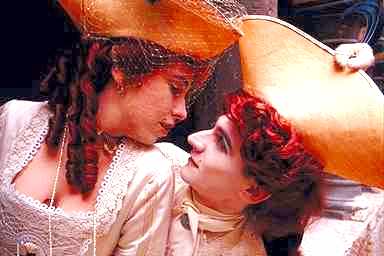| Venice
Carnival
|
||||
|
Accommodation Contact Us Entertainment News Others Package Tour Reference
Sights Transport
|
Carnival, or Carnevale, is Venice's answer to Mardi Gras and Fasching. For 10 days before Lent each winter, tourists flood the city for an orgy of pageants, commedia dell'arte, concerts, balls, and masked self-display until Shrove Tuesday signals an end to the party. It was a riotous affair, the anonymity of the mask giving free rein to fantasies, passions, debauchery and roguery. Wild and exotic animals from far-flung countries were brought to the Piazza San Marco, theatres became gambling houses, men dressed up as women and their wives mingled with harlots. Social distinction were thrown to the wind and characters were well and truly incognito, from the doge down to he beggars. It is one of the most exotic and colourful events in Europe. Foreigners flock to the city to partake in the party. Dazzling amount of money are spent on costumes and masks, the preparations starting months before the event. One participator may have as many as three costumes, others come in pair or groups with matching costumes. The merriment goes on day and
night, the city becoming a stage-set for pageants, parades, plays and
private parties in palazzi. Revellers fill the squares and take to the
waterways, gliding in gonodols and creating a riot of colour along the
dark canals. The festivities culminate on Shrove Tuesday with a masked
ball, a procession of boats gliding down the candlelit Grand Canal and a
blaze of fireworks exploding over the harbour of San Marco. Carnevale isn't just a Venetian tradition; similar festivities occur throughout much of the Roman Catholic world, including other cities in Italy. The term "carnevale" comes from the Latin for "farewell to meat" and suggests a good-bye party for the steaks and stews that Catholics traditionally gave up during the weeks of fasting before Easter. The masquerade aspect of Carnival is even older: the Romans celebrated winter with a fertility festival where masks were worn by citizens and slaves alike.
|
Its glory days of the 1700s, Carnival began on December 26 and lasted until Ash Wednesday, with mask-wearing and other unofficial activities continuing well into the spring. The nonstop partying, gambling, and general irresponsibility reflected the decline of the Venetian Republic, which had begun to lose wealth and power with the rise of Dutch and British trade in the 1600s. After Napoleon Bonaparte conquered Venice in 1797, the Republic was finished and so were the desultory remnants of Carnival.
|
||

